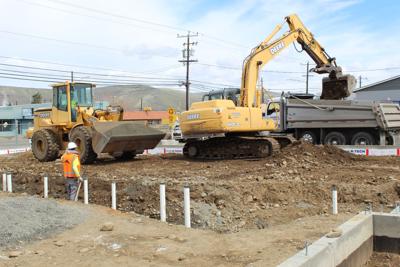The numbers are stunning: Forecasters expect Yakima County’s population to rise by 75,000 in the next 16 years — to 318,494.
That’s the equivalent of adding an extra Sunnyside, Grandview, Terrace Heights, Selah, Toppenish, Union Gap, Moxee, Wapato, Ahtanum, Zillah, Mabton, Tieton and Naches to the Valley.
And in just 16 years? Some of us might still be driving the same cars and wearing some of the same clothes that are in our closets now.
It’s not just a matter of what we’ll drive or wear by then, though. It’s figuring out where all these new people will live — we’re going to need another 25,341 housing units, county officials estimate.
And they’re going to have to be affordable.
That’s a tall order in a county where the median selling price of homes rose by nearly 10% last year and was more than $340,000 in January, according to Zillow. Local rental rates can easily run $1,400 per month, depending on the dwelling.
So there’s been plenty to talk about at the county’s ongoing public forums on affordable housing.
The second of four planned gatherings was Feb. 9, and the 20 or so developers, service providers and others who showed up talked a lot about some key topics:
- What kinds of housing will we need?
- What should landlords be doing?
- How can builders, nonprofits and government agencies work together to meet local needs?
- How should the county use the roughly $350,000 in Affordable Housing Sales Tax Credit funding it gets from the state every year?
Good questions, but some of the answers are already emerging.
We know, for instance, that people younger than age 30 represent a significant slice of the county’s growing population. Obviously, that suggests a lot of those new housing units should accommodate young families — at reasonable prices.
We also know that we continue to have chronic homeless problems, which are exacerbated by unaffordable housing.
Clearly, the answers to some of these questions involve cheaper and more plentiful housing. That, however, introduces some questions of its own.
In our eagerness to ramp up construction, will we be tempted to dilute or disregard planning rules meant to preserve open spaces and privacy? Could we risk overbuilding? Do we have enough water and adequate infrastructure to accommodate all this growth?
The problems we’re facing are serious and urgent, but some decisions are tough to undo.
Maintaining a place that’s affordable without sacrificing the core qualities that make it livable is a tightrope act that numerous Northwest communities have bungled. Ask any long-term residents of fast-growing Seattle, Portland, Bend or Missoula if their quality of life has improved or declined in the past decade or so.
While we’re genuinely glad to see county officials devote so much forethought to the future, we hope no one ignores the risks of sliding down the same path as some of our regional neighbors.
Like we said, it’s a tightrope act. Don’t look down.
The county’s planning two more forums on affordable housing — March 4 and April 1 — at the Yakima County Restitution Center’s training room, 2403 S. 18th St. in Union Gap.
We’d urge you to attend. These talks could go a long way in determining the type of community we’ll have in just 16 years — maybe even before you trade in your car or finally pitch your favorite jacket.




